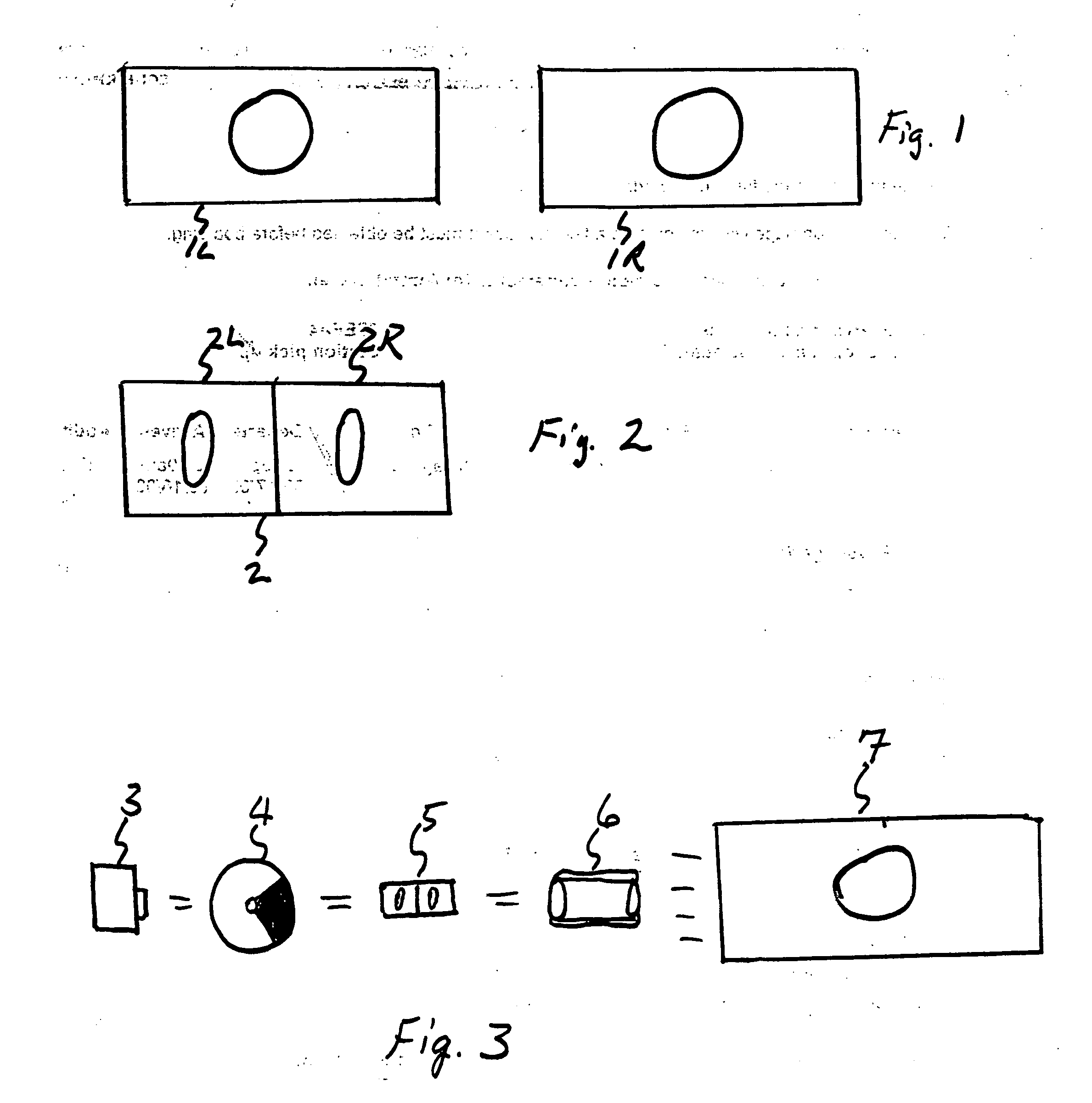Method for producing and exhibiting three-dimensional motion pictures from a single strip of motion picture film
- Summary
- Abstract
- Description
- Claims
- Application Information
AI Technical Summary
Benefits of technology
Problems solved by technology
Method used
Image
Examples
Embodiment Construction
[0016] The invention described comprised both a method for storing motion picture film images, and a method for projection of such images, with the result that the three-dimensional (3-D) effect delivered to persons viewing such films is brighter and more realistic than is now possible with conventional 3-D systems. Capture and preparation of images is separate from projection of images in the system described, although both are necessary for the system to work properly.
[0017] Turning to the “capture” side first, film images are photographed or otherwise prepared n the 65 / 70 mm film format as shown in FIG. 1. Images 1L and 1R take up the entire film frame, which features a nominal aspect ratio of 2.21:1 and can accommodate an aspect ratio as wide as 2.4:1, and contains five perforations (not shown) per frame. Films recorded in other aspect ratios (such as 1.85:1) can be converted to the 65 / 70 mm format optically or by computerized imaging techniques known in the art. For original f...
PUM
 Login to View More
Login to View More Abstract
Description
Claims
Application Information
 Login to View More
Login to View More - R&D
- Intellectual Property
- Life Sciences
- Materials
- Tech Scout
- Unparalleled Data Quality
- Higher Quality Content
- 60% Fewer Hallucinations
Browse by: Latest US Patents, China's latest patents, Technical Efficacy Thesaurus, Application Domain, Technology Topic, Popular Technical Reports.
© 2025 PatSnap. All rights reserved.Legal|Privacy policy|Modern Slavery Act Transparency Statement|Sitemap|About US| Contact US: help@patsnap.com


